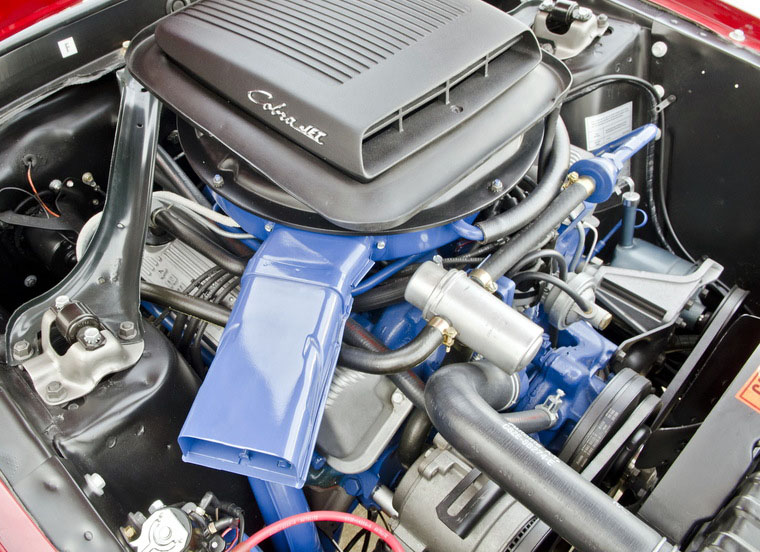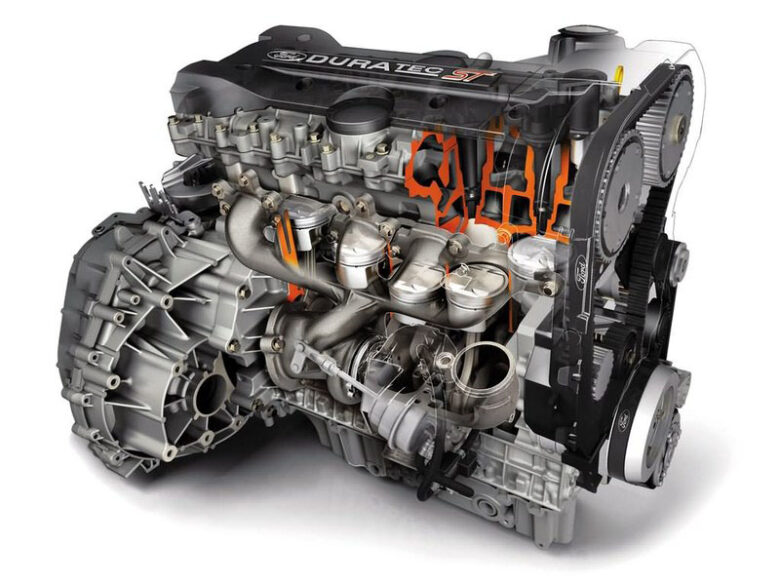5 of the best Ford Mustang engines
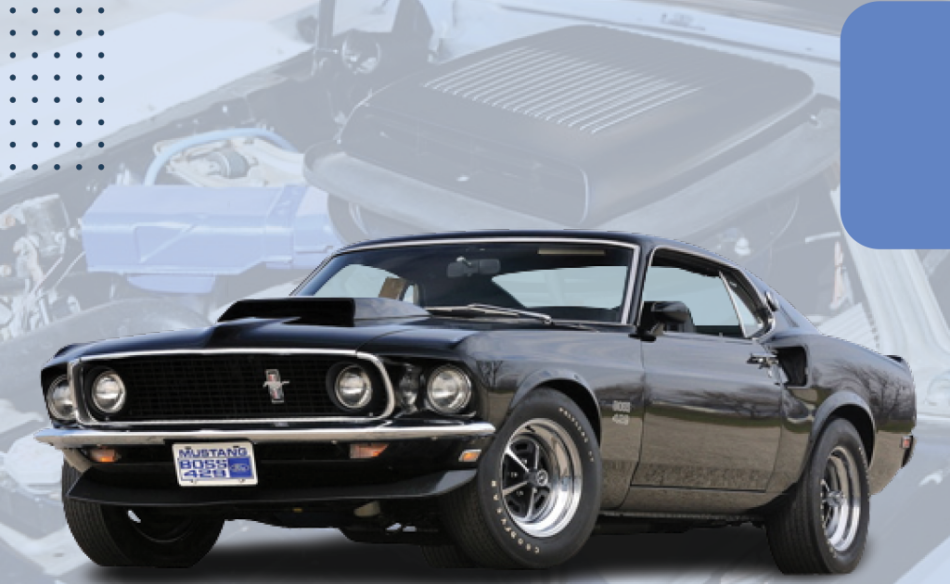
The best Ford Mustang engines list reads like a members-only club. The Mustang has become an icon through six generations, with varied engine options, from smooth EcoBoost engines to powerful V8 engines.
This will be a 360-degree view that should help you decide on your next Mustang.
Let’s start with the smaller engines and work our way up to the powerhouses.
Best Ford Mustang engines - Ford Ecoboost
The 4-cylinder EcoBoost engine made its debut in the Ford Mustang lineup in 2015.
This marked a significant shift in the Mustang’s engine offerings, providing an alternative to the classic V8 and V6 engines while catering to a growing demand for better fuel economy while still keeping the Mustang’s heritage in mind.
Key Features
The EcoBoost engine is equipped with a turbocharger, which significantly boosts its power output. This enables the 4-cylinder engine to deliver impressive horsepower and torque figures while maintaining fuel efficiency, providing a dynamic and responsive driving experience.
The engine uses direct fuel injection for efficiency, enhanced power, and fuel economy.
The compact size and lightweight design of the EcoBoost engine contribute to a balanced weight distribution for better handling and agility, making it well-suited for spirited driving.
The EcoBoost engine incorporates modern engineering technologies such as variable valve timing and advanced engine management systems. These enable the engine to provide power across a broad range of RPMs, ensuring a versatile and engaging driving experience.
One of the standout features of the EcoBoost engine is its improved fuel efficiency compared to traditional V8 engines. This makes the Mustang more appealing to those who desire its style and performance but also want to minimize its environmental impact and fuel costs.
The EcoBoost engine is an excellent candidate for aftermarket tuning and modifications.
The EcoBoost-powered Mustang serves as an entry point to the Mustang lineup, allowing a wider range of drivers to experience the thrill of owning and driving a Mustang without the higher price tag and potentially higher operating costs associated with V8 models.
Overall, the EcoBoost engines have generally demonstrated good reliability, but there have been some issues reported that are worth considering.
The turbochargers in these engines are subjected to lots of pressure to churn out enough power, more so with hard driving.
The result is the turbochargers fail and require replacement quite early. With moderate driving and regular maintenance, which includes the use of high-quality oils, you can squeeze more miles with fewer turbo challenges.
You might experience carbon buildup on the intake valves of EcoBoost engines, leading to potential drivability and performance problems.
With a 6-Speed manual transmission, you can safely drive for miles and miles. For the automatic 10-speed transmission, you could experience lots of problems solely blamed on the transmission.
In some instances, overheating and cooling system problems arise, especially in demanding driving conditions or high-performance applications.
It’s important to research the specific model year you’re interested in and be aware of any potential recalls or known issues.
Best V6 Ford Mustang engines
Best Ford Mustang engines - Cologne V6
The 4.0-liter Cologne V6 engine was first introduced in the late 1960s and became available in the Ford Mustang SN-95.
Key Features
- The engine featured a displacement of approximately 4.0 liters (or around 245 cubic inches)
- V6 engine configuration
- The Cologne V6 engine used a single overhead camshaft. The block and cylinder heads were made of cast iron for durability.
- Depending on the model year, the Cologne V6 engine used sequential multi-port fuel injection into the combustion chambers.
- The power output of the 4.0-liter Cologne V6 varied across different model years and generations. While not as powerful as some of the more modern engines, it still offered a respectable level of performance for its time.
- The 4.0-liter Cologne V6 engine was eventually replaced by more modern engine options as technology advanced and emissions and efficiency requirements became more stringent.
The 4.0-liter Cologne V6 engine was eventually replaced by more modern engine options as technology advanced and emissions and efficiency requirements became more stringent.
Best Ford Mustang engines - 3.7 liter Cyclone V6
The 3.7-liter Cyclone V6 engine is a significant engine that brought modern performance and efficiency to the Ford Mustang lineup.
First introduced by Ford in 2011 it was part of the Mustang’s fifth-generation lineup and was aimed at providing a balance between power and fuel efficiency.
Key Features included
- A 3.7 liter displacement
- V6 Configuration
- Unlike some previous V6 engines, the Cyclone V6 used a dual overhead camshaft design.
- The engine block and cylinder heads were made of aluminum. This lightweight material helped reduce the overall engine weight and improve vehicle handling.
- The Cyclone V6 engine featured Twin Independent Variable Camshaft Timing (Ti-VCT). This technology allowed for independent control of valve timing for both intake and exhaust valves, optimizing performance, power delivery, and fuel efficiency across a range of engine speeds.
- The engine used sequential multi-port fuel injection, delivering fuel directly into the combustion chambers in a controlled manner. This technology improved combustion efficiency and enhanced overall engine performance.
- The 3.7-liter Cyclone V6 engine produced varying power outputs across different model years. In its later iterations, it could deliver around 300 horsepower
- The Cyclone V6 engine was used in the fifth and sixth generations of the Mustang. It was often positioned as an entry-level engine choice, providing a more affordable and fuel-efficient option compared to the Mustang’s traditional V8 engines.
As Ford continued to evolve its engine lineup, the 3.7-liter Cyclone V6 engine eventually made way for newer and more advanced options
Best V8 Mustang engine
The Ford Mustang has featured several iconic V8 engines throughout its history. Here are some notable options…
Best Mustang engines - Coyote V8
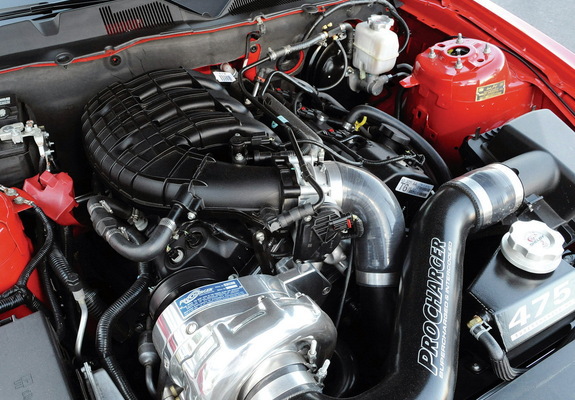
The 5.0-liter Coyote V8 engine is an iconic powerplant that gives the Ford Mustang the muscle car tag, as we know it – raw power!
The 5.0-liter Coyote V8 engine was first introduced by Ford in 2011 as part of the Mustang’s fifth-generation lineup.
It marked a triumphant return of the classic 5.0-liter displacement, signifying a significant leap in performance and technology for the Mustang.
Key Features
The engine features a displacement of approximately 5.0 liters (or around 302 cubic inches), harking back to the historic 5.0-liter V8 engines that gained fame in earlier Mustangs.
The Coyote engine employs a dual overhead camshaft design, a departure from previous single-cam V8 engines. This advanced design allows for better valve control and higher rev limits.
Both the engine block and cylinder heads are made of lightweight aluminum.
Twin Independent Variable Camshaft Timing (Ti-VCT) technology is a standout feature of the Coyote engine. It allows precise control over the timing of the intake and exhaust camshafts, optimizing power output, torque, and fuel efficiency across various engine speeds.
The engine uses direct fuel injection for better efficiency and power delivery.
The Coyote V8 engine can produce over 400 horsepower. This power ensures impressive acceleration and performance on both the road and track.
Thanks to its DOHC design and Ti-VCT technology, the engine can rev high and deliver power across a wide RPM range for an adrenaline-packed driving experience.
The popularity of the Coyote engine has led to a robust aftermarket ecosystem, with an array of performance parts, upgrades, and tuning solutions available for those who wish to extract even more power and potential from their Mustang.
Not to skip the problems as we wrap up on this engine. The Coyote can consume substantial oil, partly due to the pressure on the engine in intense drives. That could result in oil leaks, worn piston rings, or other internal engine issues.
Over time, the timing chain tensioner could present issues leading to timing chain misalignment and engine damage. Finally, you might encounter leaks that result in overheating.
Best Ford Mustang engines - Boss 302
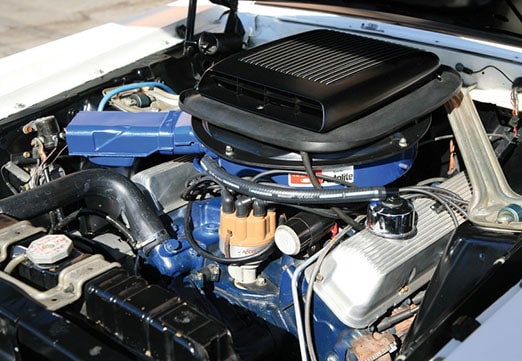
The Boss 302 Mustang engine was introduced in 1969. This was a time when the muscle car era was at its peak, and automakers were competing to offer powerful engines to capture the hearts of enthusiasts and dominate the racing scene.
Features of the Boss 302 Engine
The Boss 302 engine was a compact, high-revving, and potent V8 that aimed to strike a balance between street performance and track prowess. Here are some of the notable features of this engine:
The engine had a displacement of 302 cubic inches, which is approximately 4.9 liters. This is where the engine derived its “302” name.
The exact power output of the Boss 302 engine varied between model years, but it generally produced around 290 to 320 horsepower and 290 to 325 lb-ft of torque, depending on the specific configuration and year.
It was designed to rev high, making its power at higher RPMs. This characteristic made it suitable for racing applications and allowed it to produce impressive power.
To handle the high RPMs and stresses of racing, the Boss 302 engine featured forged internals, including a forged steel crankshaft. These components were designed for durability under racing conditions.
The engine used a solid-lifter camshaft, which was a common feature in high-performance engines of the era. Solid lifters allowed for precise valve control at high RPMs but required more frequent maintenance compared to hydraulic lifters.
The Boss 302 engine was equipped with high-flowing cylinder heads that featured larger valves and better flow characteristics. This contributed to improved air and fuel intake, enhancing overall engine performance.
The engine was equipped with a unique aluminum intake manifold designed to improve airflow and deliver power across the entire RPM range.
The exhaust system of the Boss 302 engine was tuned for performance, providing a distinct and aggressive exhaust note while helping to maximize horsepower.
The engine’s design was heavily influenced by Ford’s racing experience, particularly in the Trans-Am competition. It was built to meet the homologation requirements of the Trans-Am racing series.
It’s important to remember that the Boss 302 engine was designed during an era when technology and manufacturing processes were different from today’s standards.
The most likely option to run this engine today will be an engine swap or rebuild, in which case you are looking at purchasing a crate engine.
A 302 engine, if found intact, is several decades old, and the original components may have worn down. Aftermarket modifications are your best bet with options like crate engines.
With that in mind, if you come across a 302 worth restoring, keep in mind that restoring and maintaining a classic engine like the Boss 302 requires attention to detail and a commitment to preserving its originality.
But it is not impossible, as parts are available and you only need a mechanic who knows their onions if you opt for that route. Otherwise, if you have the expertise, this should be a fantastic project.
Best Ford Mustang engines - Voodoo V8

The 5.2-liter Voodoo V8 engine is a modern high-performance powerplant developed for the Shelby GT 350.
It is a part of the “Voodoo” engine family and has gained significant attention for its impressive power output and innovative design.
The engine was initially introduced in 2015 and has been used in select Ford models, most notably in the Shelby GT350 and GT350R Mustangs.
Features of the 5.2-liter Voodoo V8 Engine
The Voodoo V8 engine stands out due to its unique design features and impressive performance characteristics. Here are some of the notable features of this engine:
The engine has a displacement of 5.2 liters, which translates to approximately 317 cubic inches.
One of the most distinctive features of the Voodoo V8 engine is its flat-plane crankshaft. Unlike a traditional cross-plane crankshaft that most V8 engines use, a flat-plane crankshaft has its crankpins aligned at 180-degree intervals.
This design allows for improved high-RPM performance, faster revving, and a unique exhaust note.
Thanks to the flat-plane crankshaft design and other enhancements, the Voodoo V8 engine can rev to extremely high RPMs for a V8 engine.
The Voodoo V8 engine is naturally aspirated, which is quite significant for the power it displays. We are talking about 526 horsepower and 429 lb-ft of torque.
The engine features direct fuel injection, which enhances fuel efficiency and combustion control.
As a performance rig, the Voodoo V8 engine is equipped with high-performance components, including lightweight forged pistons, high-flow cylinder heads, and a unique intake manifold designed for maximum airflow.
The Voodoo V8 engine was initially introduced in the Shelby GT350 and later in the GT350R variant. These Mustang models were designed for track-focused performance, and the engine played a crucial role in delivering a thrilling driving experience.
While the 5.2-liter Voodoo V8 engine is a high-performance powerplant known for its impressive performance, there have been some reported issues and concerns that owners and enthusiasts should be aware of.
Keep in mind that not all engines will experience these problems, and the severity can vary.
Here are some common problems associated with the 5.2-liter Voodoo V8 engine:
Reports of higher-than-expected oil consumption in Voodoo V8 engines are common. This can be attributed to a variety of factors, including driving habits, engine design, and potential manufacturing variances.
The Voodoo V8 engine, like many high-performance engines, generates a significant amount of heat during spirited driving. In some cases, owners have reported engine overheating issues, especially in track or aggressive driving situations.
The flat-plane crankshaft design, while beneficial for performance, can lead to increased engine vibrations compared to traditional cross-plane crankshaft engines. Some owners have noticed excessive vibrations, especially at certain RPM ranges.
Due to the solid-lifter design and high-performance characteristics, the Voodoo V8 engine can produce more valvetrain noise compared to engines with hydraulic lifters.
While this is generally considered normal, it’s important to be familiar with the typical noises of the engine to distinguish between normal operation and potentially problematic noises.
Direct fuel injection engines can be prone to carbon buildup on intake valves, affecting engine performance over time. Regular use of high-quality fuel and occasional intake cleaning can help prevent excessive carbon buildup.
If the engine has been modified with aftermarket parts or tuning, there is a risk of introducing new problems related to component compatibility, stress on components, and improper tuning that affects engine performance and reliability.
This engine features on our list solely for the performance metrics it generates.
This brings us to the debate on…
The best ford mustang year
Picking the best Ford Mustang year is a tough process, but the modern Mustang is a force to reckon with.
By modern we mean any Mustang manufactured after 2000. Each of the categories highlighted above has a fresh release after 2015.
The Ecoboost is your best bet for a reliable engine with less hustle. The sweet spot has got to be the V6 3.7-liter engine that is reliable, and potent enough to match the power of a V8 engine.
The Voodoo is your best bet for a performance rig. It is what makes the Shelby GT500 a muscle car worth experiencing.
Overall, the Best Ford Mustang engine should be the Boss 302 from 1969, which was a solid build and truly ahead of its time.
The ranking for the best Mustang engines is a battle of might and dependability, and we covered them all.
What’s your best engine?
Top picks..
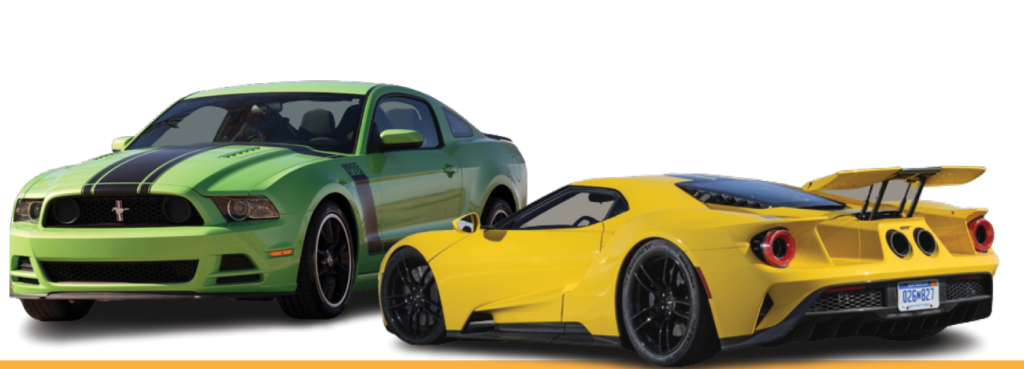
Best Ford Engines
We’ve got the scoop on the Best Ford Engines from daily drivers to high-performance vehicles.

